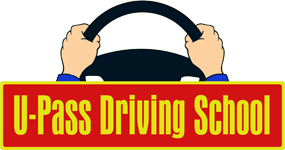All drivers have an opportunity to be courteous to other motorists, cyclists and pedestrians each and every time a trip takes place.
All too often, drivers see only other vehicles. We seldom see past the obvious car or truck and recognize the simple fact that all the other vehicles on the road are driven by people just like us. They have the same rights and responsibilities. Their families depend on them, just as ours do. Personalizing the driving task makes all the difference when it relates to courtesy behind the wheel.
Courtesy is contagious. Try the following driving protocols the next time you get a chance and see what a difference it makes.
When you are on the highway and see another vehicle entering from the right, change lanes to accommodate the merging driver. If it is a single-lane situation, keep a constant, expected and predictable speed. The other drivers will appreciate the courtesy.
Anytime you intend to turn left at an intersection where there is no dedicated left-turn lane, signal well in advance. Drivers always want to avoid having to wait behind a left turner who has not given enough advance warning of the intended turn. An early turn signal will often allow a following driver plenty of time to change lanes and avoid an unnecessary delay.
Use your four-way flashers to draw attention to yourself as a driver. They are a great way to communicate a driver’s intention.
When stopping for pedestrians, it is a good idea to let the pedestrians know that you see them clearly by using the flashers to gain eye contact. This move will warn traffic behind as well.
Flag persons, in particular, like to get eye contact with approaching vehicles. Letting them know you have seen them clearly, by using the four-way flashers as you approach, will be viewed as a simple courtesy. A friendly hand wave can often accomplish as much.
Hand signals seem to be out of vogue these days. But there is no better way to be personally acknowledged or to recognize good driving behavior. Professional drivers all use hand signals more often than the average driver. They warn other drivers of pedestrians ahead, especially when there are multiple lanes used to approach an occupied crosswalk. Bus drivers will most always drive with their side window partially open. It makes it so much easier for them to leave the curb and join traffic with the advance warning of a simple hand signal. A thank you type of hand signal by a bus or cab driver is always appreciated.
Always imagine a cyclist or motorcyclist as being as big around as the average vehicle.
This will remind drivers to provide ample space when sharing the road with two-wheeled vehicles.
Drivers who are impolite or just plain rude often believe they are anonymous.
Small towns are famous for polite driving habits.
After all, you may just meet the person you cut off at the last intersection when shopping at the local grocery store.
We would all be better off if we drove as though we lived in a small community without anonymity and personalized our driving habits with unique communication techniques.

